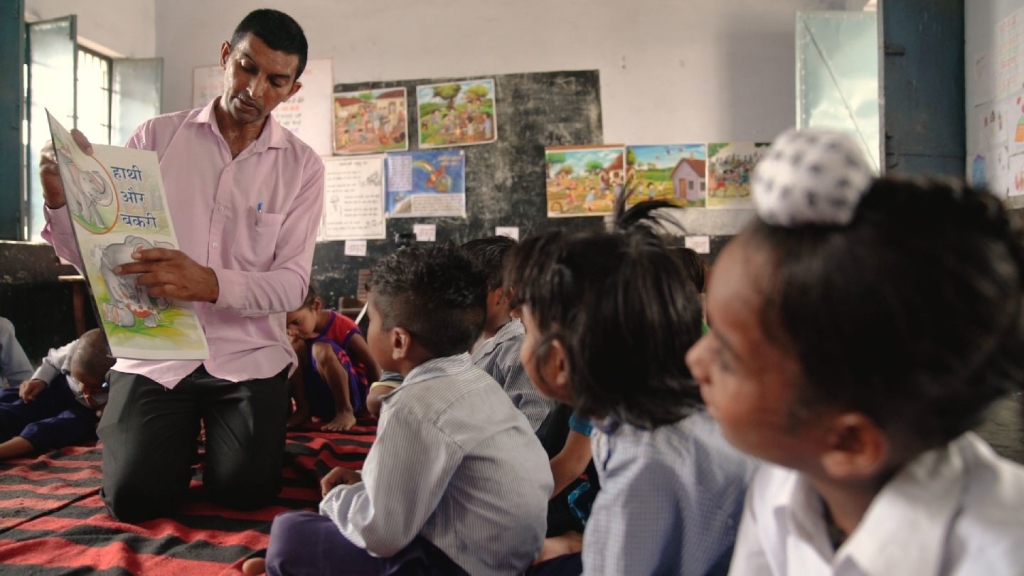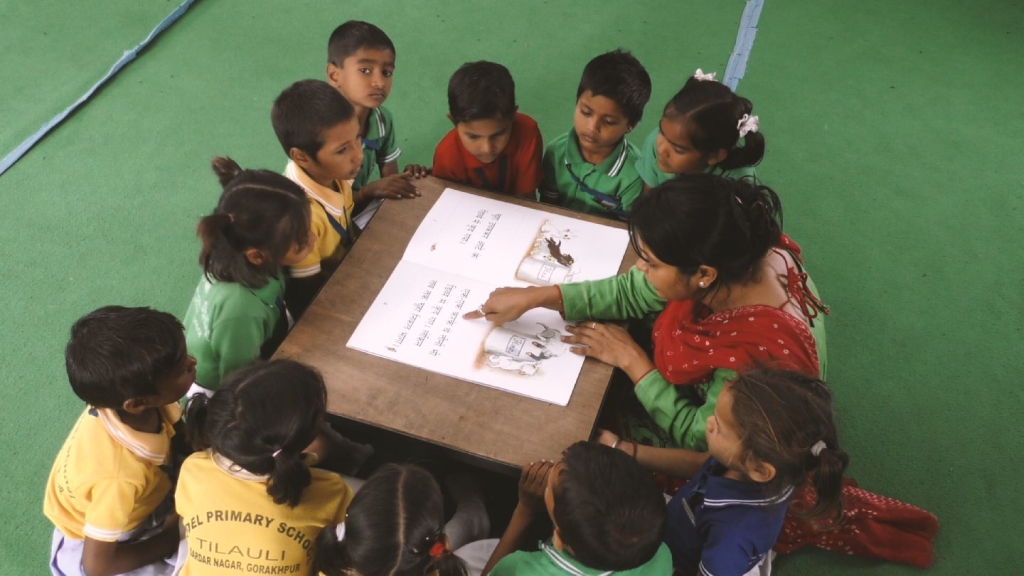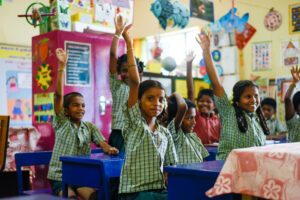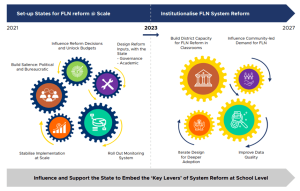Critical to a good foundation for any child’s education is a grip on the language, which is the medium of instruction in school. Teaching to develop a strong foundation in that language, for children of classes 1 to 3, encompasses the ability to read fluently with comprehension, write independently with assurance, and to develop a good vocabulary and oral expression. The criticality of this prowess cannot be underlined enough, for on it rests the child’s ability to perform well in school with confidence and ability.
It is for this reason that the draft National Education Policy (NEP) lays out a strong case for early foundational learning in language and mathematics. This is well recognized amongst educationists, academia and practitioners, and numerous methods exist for achieving this objective both in government- and private-run schools. Yet, there is no mandated common comprehensive design or methodology to ensure strong foundational learning by class 3 across government schools in the nation. We get shocked and startled when the National Achievement Survey (NAS) of the NCERT (National Council of Educational Research and Training) or the ASERs (Annual Status of Education Reports) show poor performance of children in language learning and simple maths. This is indeed alarming, as the bulk of enrolment (70-75%) still remains in government-run schools.

It was then, to my utter delight that I saw something quite out of the ordinary recently, in a humble government primary school in the Mirzapur village of district Kurukshetra in Haryana. Young 5-7-year-olds in classes 1 and 2 were merrily reading simple stories from their textbooks and storybooks with a fluency and comprehension that was at once amazing and laudable. Their absolute confidence in what they were doing and in explaining the meanings of words (which I would ask them about), came to them effortlessly. These were children from very deprived backgrounds and, though the local language was a form of Hindi, they were first-generation learners. They seemed happy to be learning – it was not a burden but a joy, and their natural spirit of childish curiosity seemed to revel in the sheer joy of learning new things. Yet, there was a quiet unenforced discipline in the class where the children would follow the teacher’s voice and blackboard work with pointed concentration, lest they should miss a nugget of learning. They were not dumbed down by the teacher or fellow students and lustily gave their views and ideas with no hesitation and a touch of humour. In short, a happy learning atmosphere prevailed.
There were earmarked teachers for classes 1 and 2, who were both young and had been intensively trained by Language and Learning Foundation (LLF), an NGO working closely with the Government of Haryana to build a strong foundation of language and learning in seven districts of the state.
The Haryana Education Department appears committed to sustain the methodology that has emerged, to ensure that language learning foundations of students in classes 1 to 3 are truly strong. Local education administrators are confident that by the time of the next NAS, ASER or the state’s own assessment of student learning comes around, their class 3 children will score very well. The educational administrators have themselves gone through the training and have a well-developed sense of how this methodology is to be worked. This is reassuring, for without the supervisors knowing what is to be encouraged, things could derail.
Above all, however, the magic lies with the teachers of these foundational classes. The LLF instructional design seems to have brought about a complete transformation in the teachers’ approach towards teaching Hindi, morphing them into facilitators and artistes creating a learning system that works in tandem with the children’s own experiences, in classrooms that have an enjoyable atmosphere, where learning happens seamlessly and in the natural flow.

The teachers gradually and progressively help children develop an understanding of Hindi words, sentences, stories, poems and writing skills. These skills are built on the children’s own knowledge base and they help upgrade children to become confident readers and storytellers. The workbooks are well crafted and are used by the children not only to develop writing skills but have the potential to be colouring books or material for augmenting motor skills. There is compatibility between the prescribed class textbook Jhilmil and a comprehensive Teacher Guide, which reminds the teacher of the scope and variety of classroom transactions that she has been trained for and the way in which she must move forward. The block level supervisors and LLF support staff are regular visitors to the school and hold periodic reviews to reinforce her teaching methodology and to assess the learning outcomes of her class.
Haryana seems to have demonstrated a resolve to tackle the quality learning challenge by going to its very root – ensuring sound language learning at the very base of schooling. They have also unhesitatingly invested in the best expertise to build a system of teacher training and supervisory management, which will help attain this objective. If those confident, happy and bright children with shinning eyes and pride in their achievements in classes 1 and 2 of the Mirzapur village primary school are anything to go by, then both the Government of Haryana and LLF are showing the way forward to a new young India.
A version of this article appeared in The Financial Express on October 21, 2019.



